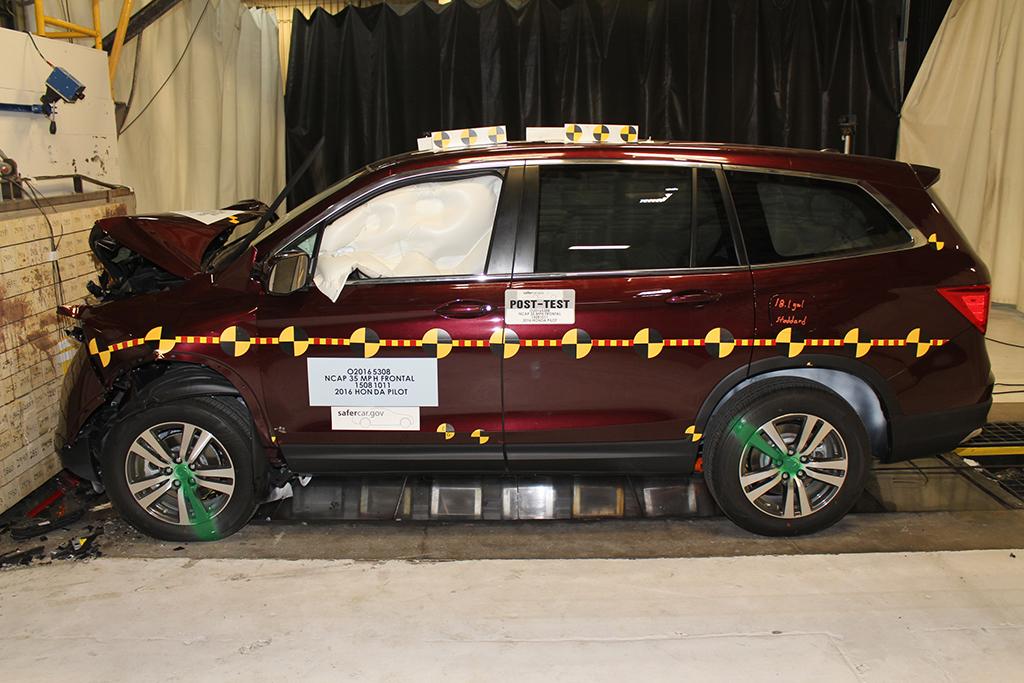
CARS.COM -- The National Highway Traffic Safety Administration's five-star safety rating program focuses on how a vehicle performs in a crash, but the agency is shifting its focus to also rate how a vehicle prevents a crash. Starting in 2018, it's going to be a lot tougher to get five stars. NHTSA announced a proposal for guidelines that factor in a new crash test, updated crash-test dummies and additional ratings for safety features like pedestrian detection and front crash prevention systems.
Related: Several Automakers Commit to Standard Auto-Braking
"These proposed changes will give consumers even better information to help them choose a safe vehicle, and will encourage manufacturers to produce vehicles with better crash protection and new technology innovations that will save lives," NHTSA said in a statement.
Much like it did during its last safety rating overhaul in 2010, the changes are sweeping. Here's what will impact consumers the most:
A new crash test: A new front oblique test joins the current front and side impact tests as well as the rollover test. According to Gordon Trowbridge, NHTSA communications director, front crashes are still killing many motorists despite the rise in seat belt usage and the prevalence of advanced safety systems and airbags. The new test aims to mimic what happens when two cars collide at an angle similar to a left-turn collision that impacts both vehicles.
Updated dummies: For the first time, a small female dummy will be used in crash tests to determine how injuries affect someone that size, and specifically in the backseat. Other test dummies are also being enhanced; NHTSA will begin using the Test device for Human Occupant Restraint dummy (THOR), which uses more sensors to better assess how crash forces impact organs. Trowbridge said the new dummy is much more advanced and will be able to assess damage with greater depth and accuracy.
New ratings components: Earlier this year, NHTSA announced plans to add more collision-mitigation technologies to its list of recommended features, but now it's going one step further by developing a ratings system for grading the efficacy of front and rear automatic braking systems. Similarly, a new pedestrian safety rating will use tests that assess how well vehicles protect pedestrians from head, leg and pelvic injuries when struck by a vehicle. NHTSA will also rate the performance of emergency braking systems with pedestrian detection.
Five stars will still be NHTSA's highest rating, but half-stars will join the report card; Trowbridge says this change should help consumers better differentiate between levels of equipment. In order to get a five-star rating under the new guidelines, a vehicle will have to excel in the crash tests as well as score high on the front crash prevention and pedestrian detection tests. Exactly what those scores will be hasn't yet been decided.
Right now, the plan is in its early stages. The public will have 60 days to submit feedback, and NHTSA intends to analyze public comments and issue a final decision by the end of 2016. The agency hopes to have the new system implemented in 2018 for model-year 2019 vehicles.
Trowbridge said the goal of the new system is to raise the bar for automakers to make safer vehicles and to arm motorists with as much information as possible.
"For their vehicles to achieve high 5-Star Safety Ratings, manufacturers will need to account for more types of crashes, more kinds of potential injuries to vehicle occupants as well as pedestrians, and technological approaches to avoiding or mitigating crashes in the first place. The result will be new incentives for vehicle manufacturers to produce safer vehicles," NHTSA said in a statement.
No comments:
Post a Comment